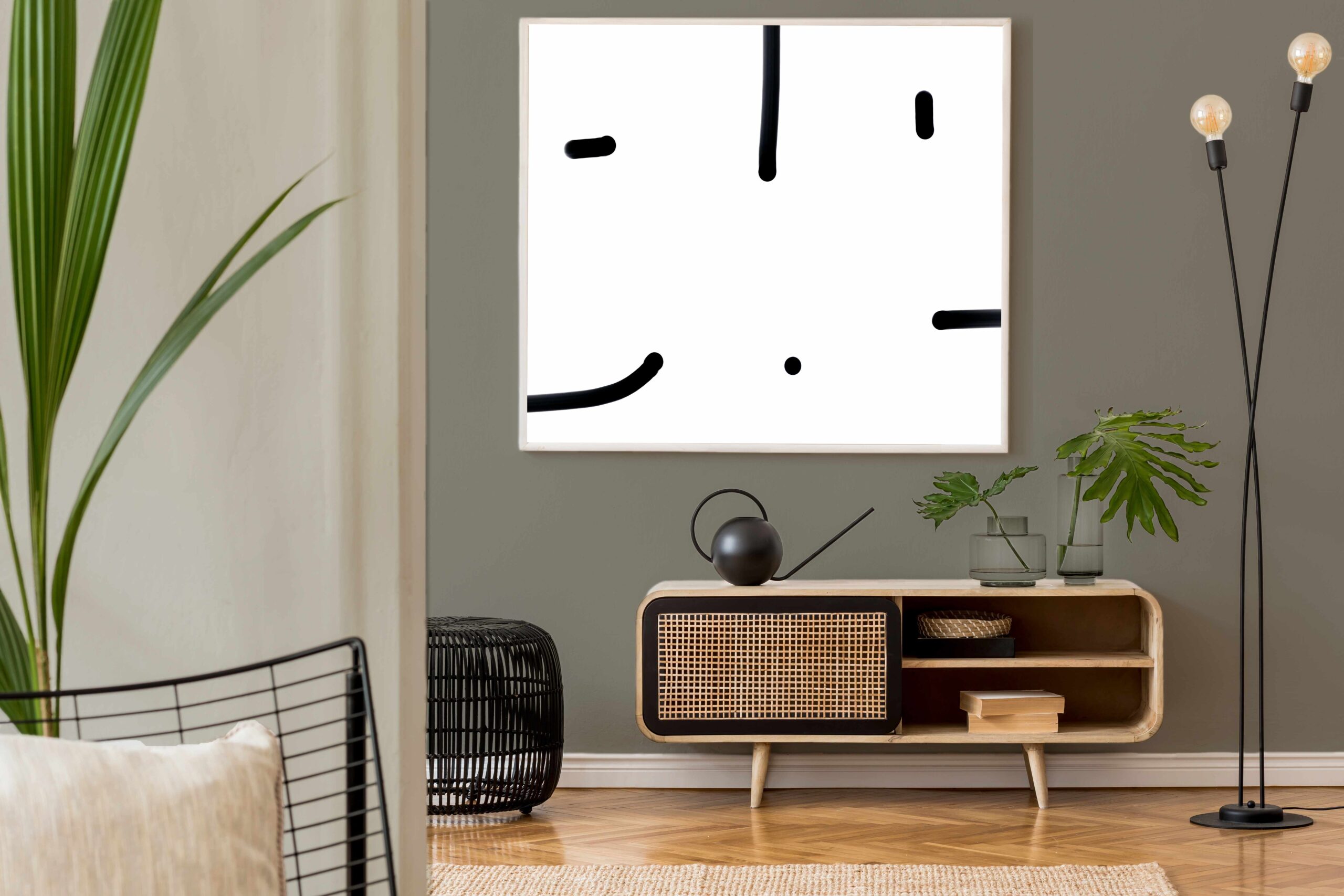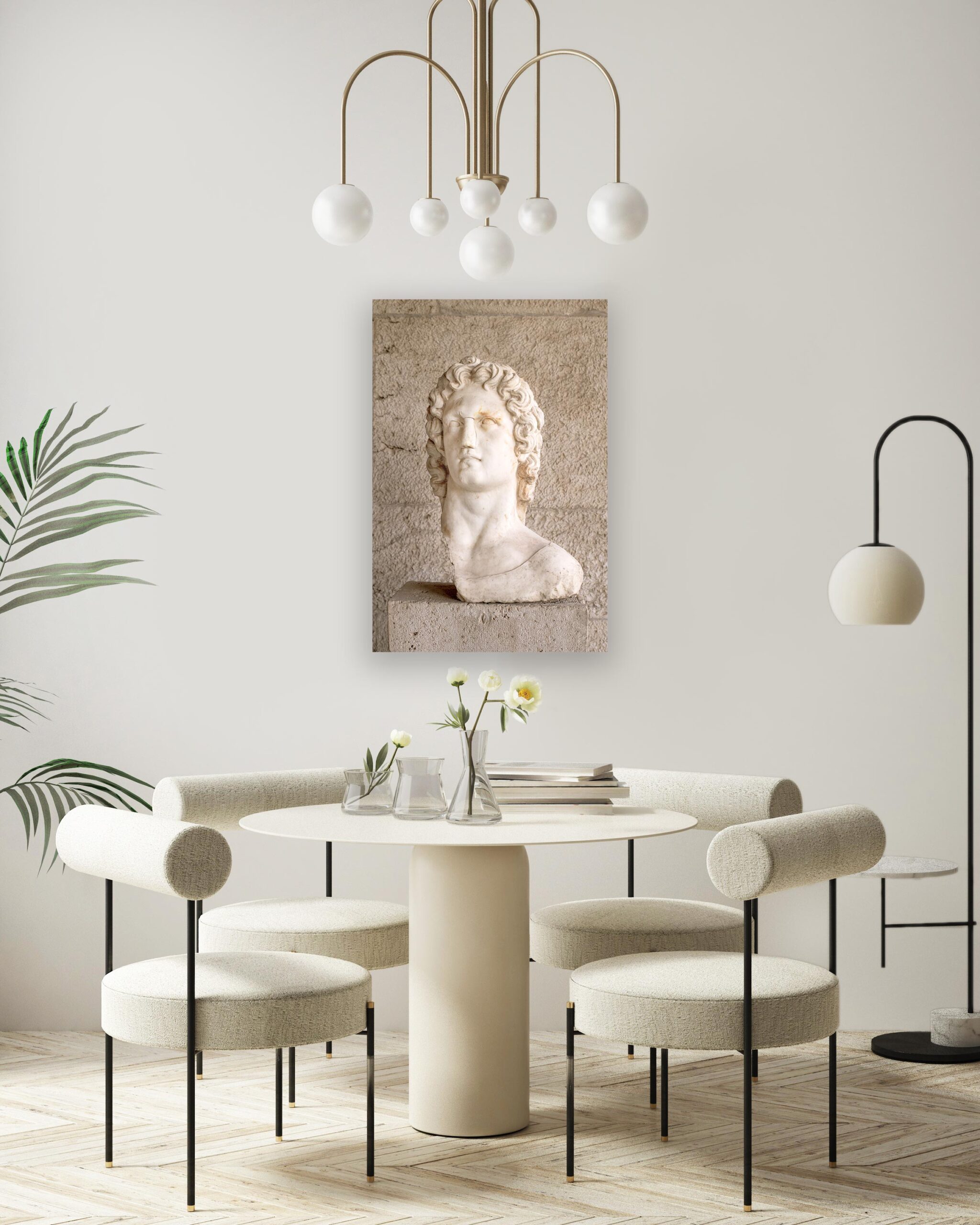A short introduction to complementary and split-complementary colour schemes.
Complimentary or contrasting colour schemes are created from colours, which are opposite each other on the colour wheel, and are often called direct complementary colours for this reason.
When using this color scheme it is important to choose the main colour and use an additional one as an accent. For this interior, we decided to go with warm orange as the primary colour, which inspires feelings of happiness, and blue as the accent colour that invites calmness. The artwork was carefully curated, not only for its quality as a contrasting colour but also for the composition which compliments this contemporary interior. Notice how the orange is echoed in the modern art piece.
The harmony group shares some special relationship qualities:
• One colour intensifies the other colour.
• They have the highest contrast, and the reason for this is they will always be made up of warm and cool colours.
• The combination is vibrant, lively, and dramatic.
• Complementary colours work best when one colour dominates, and the other serves as a contrast.
If you like the idea of a complementary colour scheme but are afraid it may be a little too bold for your taste, split-complementary is a safer choice. Like complementary colour palettes, split-complementary colour schemes are still visually striking due to the strong contrast in colours but, they have less visual tension and more interest and variety.
This color scheme involves the use of three colours. We do this by deciding on a base colour, finding its complement, and then using the two colours on either side of it as accent colours. For example, the secondary colours for blue would include yellow-orange and red-orange.
For more information on colour theory, click here ☞ https://tinyurl.com/wrmtm5z4
The digital artwork featured here ☞ Enter Into Rest – Limited Edition of 7








